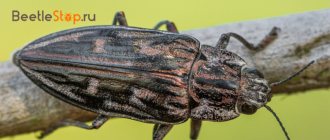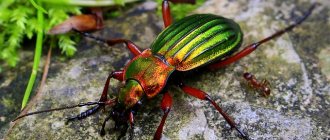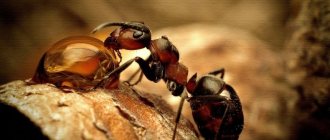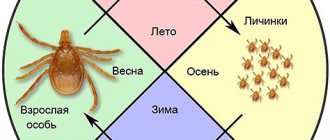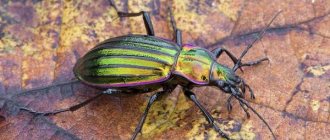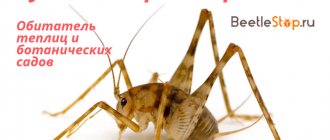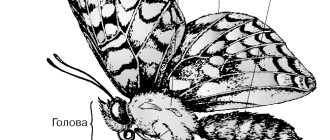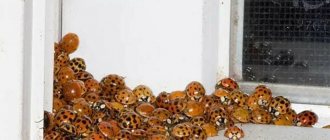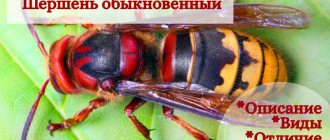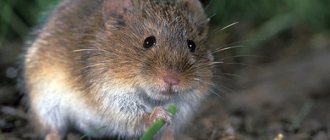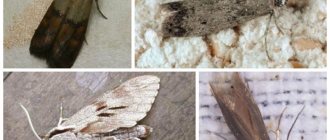In the summer of 2004, ash trees with dry tops or with a shrunken upper part of the crown were noticed in Moscow. In 2005–2006, the weakening and drying out of ash in Moscow and the near Moscow region continued and became widespread. In 2005, for the first time, characteristic exit holes of beetles were discovered on the trunks of drying and withered trees of this species, and larval passages of the narrow-bodied borer were found under the bark. At the same time, the bark of many trees bore traces of bird pecking. The pest was identified as the emerald ash borer (Agrilus planipennis); its presence had not previously been noted in the Moscow region and in Europe as a whole.
Foci of the borer were found in almost all ash plantations in Moscow, in Vnukovo, in the vicinity of Podolsk and Vidnoye. In 2011–2012, its outbreaks appeared in urban plantings of Korolev, in ash plantings in Ivanteevka, in Odintsovo, etc. To date, damage to ash ash borer in Moscow and a number of cities in the Moscow region is widespread and has already led to the drying out of thousands of trees. In addition to the Pennsylvania ash the common ash also colonizes .
Expansion paths
The natural habitat of this borer is the deciduous forests of the Korean Peninsula, northeastern China, Japan, Mongolia, and Taiwan. It is also found in the Primorsky and Khabarovsk regions of Russia. There it inhabits many species of ash, walnut, and elm trees. In the mid-90s of the last century, the borer came from the countries of Southeast Asia to the USA and Canada. It was brought through Detroit with wood packaging material from China. In 2002, an outbreak of mass reproduction of the ash borer was already recorded there, which over several years led to the death of a huge number - more than 20 million - of ash trees in the state of Michigan (USA) and in the province of Ontario (Canada).
Most likely, this pest came to Moscow at the beginning of the 21st century with large-sized ash planting material from foreign nurseries or with wooden containers containing goods from Asian countries.
Fighting methods
Since the horntail grows not only in forest plantations, it can be dangerous for coniferous timber warehouses and residential buildings built from it. Infestation of the trees themselves is no less dangerous: the large horntail is capable of destroying a large area of forest, including rare conifers, and at the first sign of its appearance, measures must be taken.
The favorite delicacy of the large coniferous horntail is felled forest, so wooden houses must be treated with special compounds against insects and fungus.
Such compositions are applied with a brush or roller, and can be purchased at any hardware store. A simple spraying with Actellik can help save your garden from horntail. It should be diluted in the following proportion: 20 grams per 10 liters of water. The same substance will help get rid of other wood-eating pests.
In addition to chemicals, other insects can also get rid of the horntail population. For example, ground beetles, pests, predatory bugs or rove beetles can greatly reduce the number of parasites. You can also use the introduction of insects from the ichneumonid family, and they will parasitize the egg clutches and destroy the horntail larvae before they are born.
Finally, in nature, the large coniferous horntail becomes prey for all kinds of woodpeckers, and favorable conditions should be created for these birds to destroy the horntail in a designated forest area. This method is best for protecting trees in their natural environment.
Places of settlement
The emerald ash borer belongs to a group of aggressive stem pests that can settle on living, usually weakened trees, which inevitably leads to their death. In China, the borer usually inhabits ash trees growing in open areas or on the edges of forests. In North America, it inhabits trees both in open spaces and in forests, starting from the tops and main branches of the crown. In Russia, this pest is found on both young and adult specimens in urban plantings of various types - in protective strips and alley plantings along roads, on boulevards and squares, on single trees and in their group and clump plantings. The borer has not been noticed in the forests of the Moscow region, most likely due to the lack of natural ash plantations.
Ash borer beetle on ash leaves
It should be borne in mind that the emerald narrow-bodied borer, having penetrated from urban ash plantings into natural forests with its participation, can spread to the south, where ash is a common forest-forming species and is widely used in shelterbelts.
Agrilus viridis L.
|
This small, agile beetle is a pest of many deciduous trees and is well known to arborists.
Spreading
The green borer is found throughout the European part of Russia, the Caucasus, Siberia and the Far East. It settles on various deciduous tree species: maple, beech, aspen, poplar, forming a number of food forms.
External signs
Although this borer is called green, its color can be very diverse and changeable: bronze, green, blue-green, blue or even metallic black. The elytra behind the shoulders narrow and then widen again. The tips of the elytra are very finely serrated. In terms of size, it rather belongs to the small representatives of the family: the length of the beetles does not exceed 9 mm.
Lifestyle
From late May to July, beetles usually fly out of the trunks on sunny days during the hottest hours. Before starting to search for sexual partners, they have a good snack on the leaves of various trees. In forest entomology, such imaginal feeding is called additional, meaning that the main feeding stage is the larva.
Females lay eggs in groups of 7–20 on the thin, smooth bark of young trees and on their branches. At the same time, they resort to a very original method of protecting their offspring: they fill the eggs with secretions of the accessory sex glands, which harden in the form of a white cap. The females have no idea that forest pathologists – specialists in forest protection – use these white caps to find and record the oviposition of the pest.
The larvae emerging from the eggs gnaw under the bark and immediately begin feeding. Here they spend their entire lives, gnawing out rather long passages. In this case, each larva makes an independent move. On weakened trees, the passages diverge to the sides, on more viable trees they intertwine, forming a kind of knot extended along the trunk. The colonization can be very dense; the trunk under the bark is completely covered with larval tunnels, which often completely ring it. It is clear that after this the tree is dead.
The larvae overwinter in a cradle in sapwood or wood. In the spring they pupate; Young beetles soon appear. One generation develops during the year.
Role in nature
The green narrow-bodied borer prefers well-lit places: open spaces and edges. Here it actively attacks viable trees. At the same time, in places where the larval tunnels form a tangle, the bark dies and a longitudinal crack forms in it. If a forest pathologist discovers such cracks, he understands that he is late with control measures. But it happens that the tree turns out to be stronger than the goldenrod and repels its attacks. In this case, the damaged spot is surrounded by an influx - a callus ridge - and gradually overgrows. Those trees that fail to do this reduce (as foresters say, lose) their growth. Their tops dry out and sap flow slows down and then completely stops. Slightly damaged trunks by borer are often affected by various diseases and die in the coming years.
The borer causes the greatest harm to poplars, birch, oak and maple, and in the west to beech and hornbeam. You can also meet it on willow, birch, and alder. Often, borers settle in forest stands that have suffered drought, windfall or excessive felling, on trees that have previously been weakened by other stem insects: glassfly butterfly caterpillars or woodcutter beetle larvae.
Symptoms and consequences
In trees infested with borer, drying begins from the upper part of the crown and gradually spreads lower, water shoots appear on the trunks, and root shoots appear at the base of the trunk. With a high population density, the death of the tree occurs in the second year, but chronic foci of the pest can also form that last for a longer time. On large trees, the borer develops over several years, causing their gradual weakening.
In the early stages (first year), it is quite difficult to establish the colonization of trees by borer. Reliable signs are pecking of the bark and the presence of larval tunnels under the bark . To detect the passages, it is necessary to remove the bark.
Flight hole of a young borer beetle
Larval galleries of the borer
Traces of bark pecking by birds on ash tree trunks
The main symptoms - characteristic flight holes on trunks and branches - appear later, the next year after settlement. Infested trees usually have a sparse crown, the leaves turn yellow earlier, swellings and cracks appear along the old passages, and secondary shoots develop along the trunk. In the third year, many branches die off, the crowns become very thin, numerous flight holes appear, and the trunks become covered with cracks.
Beetles can fly over distances of several kilometers, but most of them, emerging from a single source, travel no more than 500 m.
The borer can also be introduced with large-sized planting material, with logging residues, with unbarked wood, with wood chips and firewood.
General view of ash trees in the hearth of borer
Black borer - garden pest
The black borer is a 2 cm long beetle that is a pest of fruit trees. This borer is black in color with white speckles on its wings. The beetle is quite hard: it is difficult to crush it.
The black borer harms fruit trees: apricot, plum, cherry plum, etc. Adults eat the bark, petioles and buds of young trees. The larvae feed on roots. Young trees colonized by borers quickly die.
Special danger
The goldenrod is a dangerous quarantine species. A particular danger of the borer spreading outside its primary range is that there are no specialized enemies capable of controlling the population of the species. The overwintering larvae of this pest are often taken out from under the bark and destroyed by insectivorous birds, mainly woodpeckers. Traces of active bird activity in the form of characteristic pecking of the bark are found everywhere in drying ash plantations. Birds are especially active in autumn.
See also:Birds help in pest controlOf course, birds destroy aphids and bark beetles not for humane reasons, but because they like this food. It would be unforgivably stupid on our part not to take advantage of the gastronomic preferences of birds to our advantage. |
A frequent companion of the ash borer in Moscow is the small variegated ash beetle , which inhabits the tops and large branches of ash trees. For example, along the Volokolamsk highway and in Vnukovo, in the alley plantings along the roads, several dozen ash trees, together with the small ash beetle, were colonized and died.
Reproduction
After mating, the female lays eggs under the bark. After 20 days, larvae appear - small, thin, legless worms. They feed on ground bark, dust formed after parasitism of fungi. Other larvae descend to the root system and live there. Most species are characterized by attachment to a specific plant - poplar, oak, currant, cereals, willow, etc.
The female lays eggs one at a time or in groups. Sometimes it fills the masonry with a special substance secreted by the glands. It instantly hardens and white blisters form on the bark. Others lay eggs on leaves or near the root system.
Over the entire period of their development, the larvae molt several times and increase in size - up to 1 cm. Towards the end of the cycle they pupate. They spend the winter under the bark at the larval stage and continue to develop in the spring. Young individuals appear in May-June. Only one population of beetles is generated per year.
From the life of beetles
The borer beetles are emerald green, with a golden, bronze or purple sheen in places. The elytra are very narrow, long, rectilinearly narrowed towards the rear of the body with angularly rounded apices, coarsely and sharply serrated along the edge. Body length is 8–14 mm, larvae at older ages reach a length of 26–32 mm. Males usually live for two weeks, females for three weeks. The beetles are active from mid-May to August. Their flight is very long.
For the first time, mass flight and additional feeding of borer beetles in Moscow were observed in 2007 in alley plantings of ash along Shipilovsky Proezd and on ash trees near the river valley. Setun. The beetles flew during the day in bright sunlight. The first of them appeared on May 18, the mass flight was from June 5 to June 15.
The beetles are most active at daytime temperatures above +25 °C. The beetles undergo additional feeding on the leaves of ash shoots, gnawing out small areas of irregular configuration in them. They are most often found singly on the underside of leaves. Gnaws on leaves (mostly they are round and oval, less often oblong) are located both along the edges and on the leaf blades. Depending on the weather, beetles are active from 06:00 to 17:00 hours. In bad weather and at night, they often hide in cracks in the bark or in leaves.
Morphological description of the species
The black borer (Capnodistenebrionis) is a beetle from the family of the borer, the genus of the black borer. The adult body size is 14-29 mm (females are larger than males). The color is black, sometimes with a bronze or purple metallic tint. The head is vertical, the eyes are large, occupying most of it. The antennae are short, serrated, with transverse segments at the apex. The forehead is slightly depressed and covered with large punctures. There are several longitudinal grooves on the crown.
The pronotum is transverse - wider than long. The anterior edges are rounded, protruding slightly beyond the elytra. The scutellum is densely covered with punctures, a white waxy coating and a pattern of smooth raised spots. The front edge has a notch with a protruding angle.
The elytra are wedge-shaped - slightly retracted at the apexes, narrowed at the edges. The surface is covered with grooves of elongated dots. The hind wings are transparent, strongly veined, and darkened. The limbs are short, strong, and can be pressed close to the body.
The black borer has well-developed wings
Larva dossier
Females lay 68–90 eggs singly on the surface of the bark of trunks and the lower part of skeletal branches. The larvae hatch after one week. They bore into the bark and reach the cambium layer, where they feed on bast and sapwood throughout the summer. The passages of the larvae are flat, strongly curved, clogged with drill flour, spiral-shaped, expanding as the larvae grow.
According to our observations, larval passages can be divided according to their shape:
- into longitudinal or vertical ones (these are observed at a low density of borer colonization on the trunk)
- and spiral-shaped transverse (at high density).
Vertical passages most often have a characteristic upward bend at the end. The length of individual passages of larvae on ash trees in Moscow ranges from 22 to 39 cm, and their width at the end of the passage reaches 5 mm, the length of the larvae is 26–32 mm, the length of the pupae is from 10 to 14 mm.
Larval galleries of the borer
Latex larva in larval passage
Larva in pupal cradle
The larvae of the borer overwinter in the thickness of the bark or in the surface layers of wood, preparing cradles there in advance for pupation. The depth of the cradle reaches 3 mm, and the length and width are 16 and 3.5 mm, respectively.
Despite the fact that the emerald ash borer is a fairly heat-loving species, its larvae successfully overwinter at temperatures below –30 °C.
Pupation and emergence of beetles occurs from spring (late April - early May) and throughout the following summer. The larvae pupate at the end of the larval passage, 5–10 mm from the surface of the bark. The soon-hatched beetles remain in the pupal cradle for 8–15 days, after which they gnaw through the exit holes (their average size is 3.5 × 4.1 mm) and climb out.
Traces of additional feeding of beetles
Before departure, young beetles gnaw through the exit channel for 1–2 weeks. The flight holes are 3–4 mm wide and have a D-shape typical of narrow-bodied borers. The density of outlet holes averages 1.4 pcs/dm2 and ranges from 1 to 2.4 pcs. The generation of the borer is one to two years old.
Developmental biology
The development of black borers takes 2-3 years. Winter diapause is typical for larvae and adults. The offspring wait out the cold in the roots of fruit trees, and the adults under a layer of soil. The period of beetle activity begins after the earth warms up to 20°, in early May. The adult years last until September; some of the borers continue their life cycle into the next year. Heat-loving insects prefer to stay on the sunny side of the trunk. Beetles are especially active on hot days. Comfortable conditions for them are 28-33°.
After emerging from diapause, the entire life of golden borers is spent on trees, where they feed, mate, and lay eggs. The beetles gnaw the bark of young shoots and eat out the buds. Females are more voracious; this feature is associated with the need to obtain nutrients for future offspring. The lifespan of females is 370 days. In autumn, most of the beetles die off, only some females remain for the winter.
Reproduction
Mating of beetles begins 2 weeks after sleep. They manage to replenish the necessary supplies. The breeding season lasts until September. In a few months, the female manages to lay from 250 to 2000 white oval eggs. The clutches are located in the bark next to the root collar, on leaves, in cracks in the soil. The beetles choose weak trees for ovipositing. The greatest activity is observed during the day, at a temperature of 29-30°. Eggs require a dry substrate; increasing humidity above 50% leads to mass death of offspring. If there is no suitable soil near the trees, then females leave eggs at a distance of up to 1 m from the food object. Embryo development takes 10-20 days.
Lifestyle of the larva
The hatched larvae independently reach the roots of the trees. Tufts of body hair help them move in the soil. In older ages, this adaptation disappears. In the first instar, the larvae have sensitive cones on their antennae, primitive organs of touch. The head is brown, the upper lip is rounded, the lateral lobes are poorly defined.
They molt before being drilled into the roots. The food plants of the black borer are: apricots, peaches, plums and other stone fruits. The larva is yellow-white, legless. The body is elongated, the abdomen is thin. The prothorax is expanded, the head is retracted into it. Externally, the larva looks like a series-connected chain of 13 segments. It is capable of stretching and compressing the body in the longitudinal direction.
Black borer larva and pupa
The larvae lead a hidden lifestyle, always staying under the bark of the roots. They prefer roots with a diameter of 2-3 cm; they gnaw out wide passages, which are clogged with drill flour. The tunnels go down to a depth of 30 cm. Development takes 2 years. After its completion, the larva constructs an oval cradle for pupation. This happens in the spring. The chamber is located in the area of the root neck, its size is 3 by 1 cm. The hole on the stroke side is clogged with sawdust. The pupa is yellow-white and develops in 10-12 days. The size of the pupa is 28 mm, it has visible rudiments of legs, wings and antennae. Young adults feed until the cold weather and go into the soil for the winter.
The situation demands it!
Considering the high occurrence of the ash borer in areas of mass drying of ash trees and the large area of settlement on the trunk, the total number of the pest in the foci is very high, which threatens the life of neighboring plantations with ash trees. The current situation requires a set of active protective measures against the borer.
- To localize pest outbreaks before the onset of spring, urgent sanitary felling should be carried out in all areas of massive weakening and drying of ash trees. Unfortunately, this measure is often applied very late after the borer beetles have flown out and settled; moreover, the trunks of cut trees are usually stored and lie for months in the places where they were cut down. At the beginning of summer, the overwintered larvae successfully pupate, and the opportunity is created for the emerging beetles to colonize nearby ash plantings.
- Removal and felling of trees infested with borer should be carried out before the beetles fly out, immediately after identifying infested trees, which are easily identified by pecking at the bark. It is necessary to regularly inspect all ash trees and plantings to identify foci of ash borer.
- The trunks and branches of all felled trees infested with stem insects must be removed from the felling sites before the beetles begin to fly.
- At the same time, it is necessary to tighten control over large-sized ash planting material imported into the Moscow region from foreign nurseries.
__________________________________________________
Pine beetles
Greater pine beetle
Pine beetles are among the most dangerous pests. They affect vital tree tissues: wood and bast, through which water and nutrients are transported.
Lifestyle
The development of borers takes place on trees and shrubs. Adults feed on the bark of young shoots and sometimes on leaves. The larvae eat roots and live in the root system of the plant. The larvae of some species make tunnels under the bark of trees.
The golden beetle loves sunny weather. You can meet the insect on trees and bushes. It crawls quickly and occasionally takes off. On a cloudy day, at night the beetle hides in a secluded place.
Insects skillfully hide from enemies. Good eyesight helps to notice an ill-wisher. The goldfish quickly but imperceptibly crawls down the trunk and hides in the leaves. If this maneuver does not help, it takes off or tucks its legs and falls to the ground without moving.
Gold beetle
The borer insect is a natural enemy of many crop pests. The beetles are specially placed on the site. However, their larvae can also harm grain crops, shrubs, and young trees by making numerous tunnels under the bark.
Scale insects (Diaspididae)
Scale insects and false scale insects are frequent “guests” on thujas, junipers and yews. They are covered with a protective “shell” and look like small growths or plaques on the foliage. In females the scutes are round, up to 2 mm in diameter, while in males they are oblong. The color of the “shell” can vary from red-brown to dark brown. The greatest damage is caused by the larvae, which immediately after hatching begin to suck all the juices from the plant. Pseudoscale insects are also quite dangerous pests; their shell does not fuse with the insect’s body, and even if the shield is picked off, the parasite will remain on the plant. It is possible to determine that a tree or shrub is being attacked by scale insects by these small “growths” under which the adult insect is hiding. The needles lose their shine, turn brown, and wasps flock to the scale insects' secretions. The needles become covered with plaque, turn yellow and fall off, and the tree gradually dies.
Measures for the prevention and control of scale insects
|
We examined only the most common diseases and pests of coniferous plants, which cause maximum damage to them. In fact, there are much more of them, so you should regularly carefully inspect the plantings and take timely care of the health of your favorite plantings.
Morphology
Imago. The narrow-bodied currant borer has common characteristics of the borer family, such as an elongated body, a color with a metallic sheen, a fixed prothorax, five-segmented tarsi, and serrated antennae.
The head is medium-sized, vertical, with the forehead facing forward and the mouth parts down. The epicranium is rounded, dorsally flattened in the anterior part. The parietal and frontal sutures are clearly distinguishable. The clypeus is fused with the forehead, there is no fusion suture. The antennal pits are open. The antennae are flattened, short, and saw-tooth starting from the 4th–5th segments. These segments have pits on the distal section. Sensitive pores are concentrated in the pits.
The eyes are complex, strongly developed, occupy most of the epicranium, as a rule, up to the line of its entry into the prothorax, which affects the expansion of the field of vision. The facets are numerous and small. The edge of the eye is equipped with a row of cilia.
The mouthparts are short and tightly closed. The upper lip is transverse. The mandibles are massive and short. Maxillae with short maxillary tentacles, normal. The lower lip has short labial tentacles and a wide chin.
Pronotum with lateral carina. The fore coxae are not widely spaced. Between the coxae there is a posterior process of the prothorax. The prothorax is transversely rugose in the region of the sternum and the groove bordering the posterior process.
The mesothorax is more developed than the prothorax and metathorax. The middle coxae are close together.
The metathorax is long and strongly developed. The metasternum is smoothed in the middle, the median suture is clear.
Hind coxae close together. The legs are strong, short, hips without teeth.
Species of the genus of narrow-bodied borers are characterized by a highly elongated body with a length-to-width ratio of more than 4:1 and large eyes.
The body length of the narrow-bodied currant borer is 6–9 mm. The body is oblong, narrow, greenish-copper in color, with shine. The elytra are smooth, tapering towards the end.
Sexual dimorphism The last segments of the male's abdomen form the copulatory apparatus. At rest, it is pulled inside the body. The male copulatory apparatus consists of two parameres fused at the base. The last segments of the female's abdomen form a soft, retractable ovipositor. A pair of single-membered movable cerci is noticeable near the apex.
The egg is covered on top with a hard oval shield; at the beginning of development, the shield is orange, then becomes brownish-gray, matching the bark of the host plant.
The larva is slightly flattened, legless, sharply segmented. The color of the integument is yellowish-white. Body length – 15–18 mm. The head is pulled into the anterior segment of the chest. The chest shield is much larger than the head.
The upper lip is mobile, uncolored, tender, and well developed. Mandibles with cutting sharp edges, highly chitinized. The antennae consist of three segments and are short. The maxillae are slightly reduced, the stipers are short, with a single apical lobe and a short tentacle of two segments. The lower lip is reduced even more. Its tentacles look like undifferentiated tubercles.
The prothoracic segment of the larva is equipped with two motor (supporting) platforms, located on the prothorax and pronotum, respectively. The mesothorax and metathorax are less developed than the prothorax. Mesothorax shorter and wider than metathorax.
The first eight segments of the larval abdomen are similar to each other; spiracles are located dorsally on the sides. Of these segments, the first is the smallest. The ninth segment is narrower than the previous ones, the tenth is smaller, and is not armed. The body of the larva is covered with sparse, short hairs.
“Conifer lovers” under a microscope
In order to successfully fight the enemy, you need to know him, and the better you know him, the easier it is to fight him and treat the tree. The results of the activities of all of the above pests are almost the same, but there are still some differences.
Pine aphids are grayish insects of an oblong-ovoid appearance, distinguished by strong hairiness, as for parasites. They usually sit in rows on the needles of Scots or mountain pine and suck the juices out of it, causing the needles to dry out and fall off. Aphids lay eggs on the lower surface of needles, where they overwinter. The measures to combat it are quite simple: you can wash off the aphids with a strong stream of water, you can also rinse the ends of the infected shoots in a bucket of soapy water, first covering the soil so that a large amount of soap solution does not get on the roots. The procedure must be repeated several times at intervals of 6-10 days until the parasites disappear. In the spring, you can treat the affected needles with insecticides.
Hermes are sucking dark red insects like aphids, about one millimeter long, located under the white fluff of faded needles, next to which you can see their rusty-yellow eggs. The results of the vital activity of Hermes are manifested in the shortening and fading of pine needles. In addition, they seem to “clear” the way for sooty fungi, which settle on sticky sugary smudges, spoil the “appearance” of the pine tree and infect deformed needles and shoots. It is best to remove Hermes with systemic insecticides that act on them through the sap of the plant.
The “relatives” of aphids also include coniferous insects - small insects with white fibrous shields on their backs, which serve as protection from predators. Their activity causes pine needles to turn yellow and curl. Scalebugs pose a particular danger during drought years, when they multiply in such numbers that it seems as if the branches are covered with unplanned frost. In addition to their harm, scale insects are also one of the main carriers of viruses, so their appearance on a pine tree is fraught with serious complications for it.
If the damage by scale insects is not severe, they can be destroyed by spraying the affected branches three times with tobacco infusion, which should be done at intervals of one week. If there are a lot of scale insects and the disease is in an advanced stage, systemic insecticides will come to the rescue, as in the case of Hermes, which for some time make the pine sap poisonous for pests.
It is much more difficult to remove pine scale insects - small bugs 7-10 mm in size that feed on the juices of shoots and needles, which leads to their falling off and the death of plants. The difficulty of dealing with them is that, firstly, they are covered with scutes, and secondly, they live under pine needles, so you won’t notice them right away. They fight with scale insects depending on the degree of infestation of the tree: if it is small, then the bugs can be cleaned off with an ordinary toothbrush, but if there are a lot of them, then you cannot do without the help of insecticides. Most often, akarin is used in a dosage of 30 g. for 10 l. water. Experts advise treating the tree at the moment when the larvae emerge, but the buds have not yet blossomed - that is, in May or June. The use of hunting belts made of burlap or straw is also considered an effective remedy.
The fruits of the labors of the red pine sawfly (or, as it is also called, “false caterpillar”) are visible even from afar in the form of yellow spots on the crowns of pine trees. Up close, it turns out that the needles are not just yellow, but also twisted and bitten on the sides. Microscopic, only 6-8 mm long. The larvae are dirty green in color with black flat heads and prefer to lead a group lifestyle and, in case of any threat, make frightening movements with the front part of the body. It is generally accepted that they feed only on old needles, but this is not always the case.
The fight against sawfly involves the following:
- digging up pine tree trunks.
- destruction of nests and larvae (if there are few of them).
- spraying with infusions, decoctions of insecticidal plants and insecticides.
It should be borne in mind that the eggs of the false caterpillar are characterized by amazing frost resistance and, being under the snow, can withstand winters with temperatures down to -40 degrees.
Spider mites are another insect, the results of which can often be seen in dry, hot weather in the form of a sticky web on the branches of young pine trees, which causes the needles to die and fall off. The fight against it consists of preventive spraying with cold water, infusions and decoctions of insecticidal plants, treating needles with preparations containing colloidal sulfur and pruning damaged shoots. If the area affected by the tick occupies a large area, acaricides should be used.
Details about diseases caused by fungi
The causative agent of rust is the parasitic fungi Coleosporium, which settle on long-suffering needles. This disease appears in the spring, when orange-yellow vesicles filled with spores are visible on the tree. The result is yellowing of the pine needles, in which infection can persist for a long time. Some types of pine - for example, Weymouth - can be affected by rust of other types of plants - for example, black currants and gooseberries. When fighting the disease and for the prevention of those trees where its symptoms were observed, copper-containing preparations are used - “Abiga-pik”, “Kuproksat”, “Khom”, “Oksikhom”. In addition, you should avoid planting intermediate hosts of rust - currants and gooseberries - near the pine tree, and make sure that bells, sow thistle and coltsfoot do not grow next to it.
If a pine shoot is bent in the shape of the English letter S and resin-covered wounds and golden-yellow elongated swellings appear on it, from which elongated ulcers then appear, if these same swellings also affect the needles, this means that the taiga beauty has become ill with pine whirligig - an illness caused by the fungus Melampsorapinttorgua. It overwinters in the tree bark and appears in the second half of May, and with equal force it affects both seedlings and young plants up to 10 years old. You can recognize the whirlwind at the initial stage by the formation of a green bark, in which, upon close inspection, you can see white dots that turn yellow after a few days. For annual seedlings, spinner is especially dangerous and can cause mass death. To avoid illness, experts recommend the following actions:
- remove and burn fallen leaves, since in the spring basidiospores form on them, through which infection occurs.
- spray the tree with a one percent solution of Bordeaux mixture (three times), the same solution of polycarbacin or a 0.8% solution of zinebom.
- carry out injections into the tree trunk.
- use immunostimulants and microfertilizers.
The next disease - scleroderriosis (also called umbrella disease and crumenulosis) - is most dangerous for cedar, mountain and Weymouth pines and for young growth. Its causative agent is the fungus Brunchorstiapinea, whose activity can be seen in early spring:
- the bark becomes reddish-brown and hard, becomes stained and easily separates from the wood, hangs in the form of a flag or hut, after which it dries out and crumbles.
- the apical bud dies.
- Most of the young shoot is deformed, and the stems of the seedlings die off entirely or in the upper part.
Measures to combat moths
Although the caterpillars have already caused great damage to the tree needles, it is possible to disrupt the chain of growth at the moment the pupa transitions into a butterfly, which again produces offspring. To do this, in late autumn in infected areas, as well as for preventive purposes in a normal forest, it is recommended:
- rake coniferous and grass litter into piles;
- allow animals to pasture, such as pigs and goats, which will rake up the coniferous litter and eat the pupae, which will significantly help in the fight against moths.
Severe frosts, during which a large number of caterpillars die, help reduce the number of moths.
Helpers in the fight against moths:
- various types of ant colonies, shrews, moles and hedgehogs;
- spiders and birds helping the forest as orderlies.
In addition to the above measures, it is known that moth pupae are susceptible to fungal diseases.
Coniferous trees affected by pine moth will only be able to recover next year. This suggests that natural growth is minimal.
So, the main protective measures are as follows:
- Attract birds to plantings to help fight moths.
- Protect and protect beneficial birds.
- More often settle anthills near pine plantations.
- If there is a large number of moth pupae, it is necessary to apply treatment with a biological product or insecticide during the period of caterpillar revival (phosphorus preparations, neonicotinoids and pyrethroids).
- Apply agronomic measures: monitoring caterpillars (feces) in September and the number of pupae after the snow melts in the spring.
Taxonomy
Ovalisia mirifica
Of the more than 15,000 species, almost 20% are in the largest genus of beetles (and possibly of all animals), Agrilus
, which describes about 3000 species. There are 95 known fossil species of borers, six of which lived in the Jurassic period.
|
|
